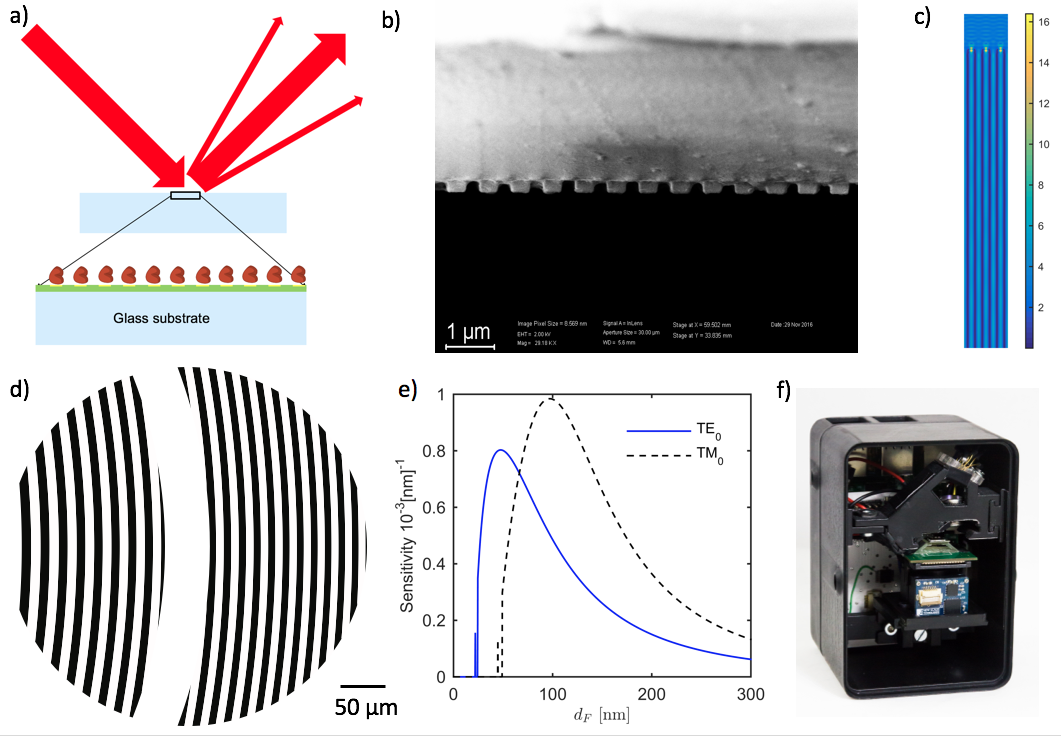Frutiger, Andreas
No database information available
PhD student, 2015 to 2020
Guest lino Biotech AG, 2020 to 2023
Research Objective
Label-free biosensors enable to monitor biomolecular interactions in real-time. In particular, optical biosensors – and more precisely – refractometric biosensor concepts are well-established and extremely sensitive (pg/mm2). However, these approaches such as SPR (Surface Plasmon Resonance) [1] exhibit inherent drawbacks. Since they measure any change in refractive index on the surface they are susceptible to fluctuations in temperature, buffer composition and most importantly, any nonspecific binding to the sensor surface will generate a signal. These inherent problems bring experimental limitations, especially the inability to measure biochemical interactions in their biological environment (serum, plasma). Diffractometric sensor technologies do not suffer these limitations, since their architecture is inherently self-referencing. Nevertheless, to date, these technologies were an order of magnitude less sensitive than refractometric approaches. [2] Recently, a diffractometric technology - Focal Molography - was introduced that is expected to be comparably sensitive like SPR and is real-time, label free and not restricted by non-specific binding [3].
At ETH we investigate Focal Molography in all its details. We develop optical instruments, perform optical simulation of the expected scattered intensity distribution of molecular lenses, assemble molecular holograms, design and simulate phase mask, perform nanopattering of non-fouling polymer layers on waveguide substrates on a normal labbench and develop state of the art immunoassay. The close collaboration with Roche makes our work matter. If you want to be part of this amazing adventure please contact me via email.

Open Student Projects
For reason of intellectual property, I do not want to post the project description on this website. Please contact me directly if you are interested in a project and we will define something that suits your interest. I offer scientific (Investigation of new optical sensing concepts and structures) as well as more engineering type of projects (Building optical instrumentation as well as programming setups).
In case you are interested, send me your CV, your current average mark, your present mystudies overview and a copy of your last project (this can even be your matura work).
Open projects:
- Investigation of a DFL (Distributed Feedback Laser) for integrated biosensing (master thesis)
Research Interests
- Optical Biosensors in all their beauty
- Real-time biosensors for complex biological samples - i.e. - blood
- Instrumentation
- Lasers and Waveguides
- Nanofabrication
- Phase mask lithography
References
[1] J. Homola, Chem. Rev. 2008, 108, 462.
[2] J. B. Goh, P. L. Tam, R. W. Loo, M. Cynthia Goh, Anal. Biochem. 2003, 313, 262.
[3] C. Fattinger, Phys. Rev. X 2014, 4, 031024.
